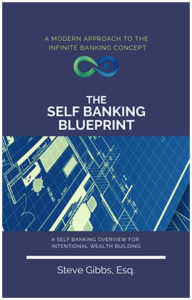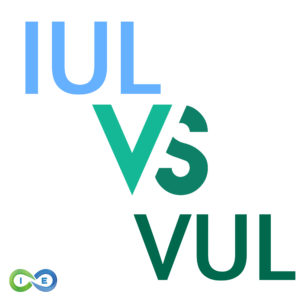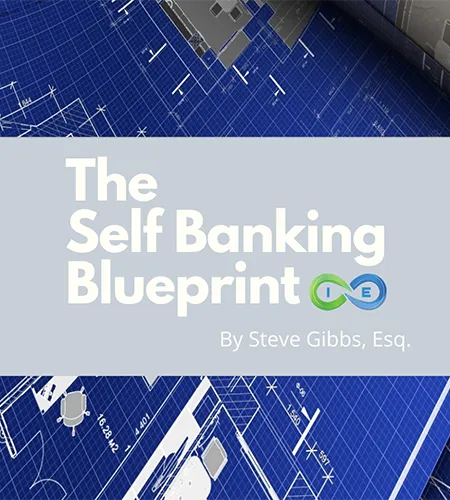Traditional retirement income sources like Social Security, employer pensions, and personal savings are staples for many, but they often fall short in today’s volatile economy. A 2024 Federal Reserve study reveals 64% of Americans are worried about outliving their savings, and with market uncertainty, relying solely on these sources can be risky. Indexed universal life (IUL) insurance offers a powerful alternative, providing tax-free retirement income, market-linked growth with principal protection, and an income tax-free death benefit. Unlike 401(k)s or IRAs, IULs have no contribution limits or required minimum distributions (RMDs), giving you greater control over your financial future.
Not all IUL policies are created equal. Overfunding strategies can maximize cash value for tax-free loans, but complexities like fees, caps, and policy lapse risks require careful planning. This guide explores how IULs work, their role in retirement planning, and strategies to optimize tax-free income, drawing on 2025 insights and expert analysis.
Table of Contents
How IUL Works: Mechanics and Benefits
Indexed universal life insurance is a type of permanent life insurance that blends the flexibility of universal life with market-linked growth potential. Premiums are split into two components: the cost of insurance (COI) and the cash value, which grows based on equity indices like the S&P 500, subject to caps (e.g., 10–12%) and floors (typically 0%). This structure allows policyholders to benefit from market upswings while avoiding losses during downturns.
Cash Value and Market-Linked Growth
The cash value grows through index-linked returns. For example, if the S&P 500 gains 15% annually, a policy with a 10% cap credits 10%. If the index drops, the 0% floor ensures no loss. Participation rates (e.g., 70%) may reduce returns—for instance, a 12% index gain with a 70% rate yields 8.4% (12% × 70%). Crediting methods, like annual point-to-point or daily averaging, also affect returns. Annual point-to-point uses start-and-end index values, while daily averaging smooths volatility with periodic snapshots.
IULs offer tax-deferred growth, meaning no taxes are due on gains until withdrawal, and an income tax-free death benefit for beneficiaries. This dual benefit makes IULs a versatile tool for retirement and legacy planning.
Overfunding for Wealth Accumulation
Overfunding involves paying premiums beyond the minimum to maximize cash value growth, shifting the policy’s focus from death benefit to living benefits like retirement income. For example, a 45-year-old paying $20,000 annually (vs. $5,000 minimum) could build $1.2 million in cash value by age 65, assuming a 7% return. Overfunding must avoid Modified Endowment Contract (MEC) status, where premiums exceed IRS limits (120–150% of actuarial value), losing tax-free loan privileges.
Overfunded IULs prioritize tax-advantaged growth and retirement income, with additional premiums going directly to the cash value after covering fees. This strategy can generate significant tax-free income via policy loans, making it a powerful retirement planning tool.
2025 Statistic
A 2025 LegalZoom survey found 68% of high earners seek tax-advantaged alternatives to 401(k)s, making IULs a growing choice for retirement planning.
Tax-Free Income Strategies
IULs excel at generating tax-free retirement income through policy loans, offering flexibility and tax advantages over traditional accounts.
Policy Loans and Wash Loans
Policyholders can access cash value via tax-free loans, considered “debt” rather than income. IUL Loans come in two types:
- Standard Loan: Charges a fixed interest rate (e.g., 4–6%). Insurers credit the cash value at a slightly lower rate or peg it to the loan rate. The loan amount is removed from the cash value, with returns credited only to the remaining balance.
- Variable Interest Rate Loan: Uses a monthly average rate, often higher than the policy’s credited rate, and may change annually. The loaned amount continues earning interest, but unpaid interest is added to the loan balance, accruing further interest.
“Wash loans” occur when the loan interest rate (e.g., 2%) matches the cash value’s credited rate (2%), resulting in no net cost. For example, a retiree borrowing $75,000 annually from a $1 million cash value IUL with a 7.5% growth rate and 0% spread could access $2.25 million tax-free over 30 years with no cost, as shown below:
| Age | Year | Annual Loan | Cumulative Loans | Net Cost (0% Spread) |
|---|---|---|---|---|
| 65 | 1 | $75,000 | $75,000 | $0 |
| 75 | 11 | $75,000 | $825,000 | $0 |
| 85 | 21 | $75,000 | $1,575,000 | $0 |
| 94 | 30 | $75,000 | $2,250,000 | $0 |
Source: Look Before You LIRP, David McKnight, 2016.
Loans don’t require repayment during the policyholder’s lifetime; unpaid balances can be deducted from the death benefit, with the remainder going to beneficiaries. However, if loans exceed cash value, the policy lapses, triggering taxes on gains.
Protecting Social Security Benefits
IUL loans don’t count as provisional income, unlike IRA withdrawals, which can make up to 85% of Social Security benefits taxable. For example, a $50,000 IUL loan won’t increase your taxable income, preserving Social Security benefits and reducing overall tax liability.
Additional IUL Benefits
Beyond tax-free income, IULs offer several more benefits:
- Flexibility: Adjust premiums and death benefits to match financial goals.
- Healthcare/Long-Term Care Riders: Use death benefits for nursing home or home healthcare costs.
- Disability Income Rider: Receive monthly income if unable to work.
- IRA Supplement: Tax-deferred growth without contribution limits, ideal for maxed-out IRAs/401(k)s.
- Creditor Protection: In many states, IUL cash value is shielded from lawsuits and creditors.
Expert Tip
IULs lack annual contribution limits, unlike 401(k)s ($23,000 in 2025) or IRAs ($7,000), making them ideal for high earners seeking tax-advantaged growth.
Pros and Cons of IUL Overfunding
| Benefits | Considerations |
|---|---|
| Accelerated cash value growth | Lower liquidity in early years |
| Tax-deferred accumulation | Long-term commitment required |
| Tax-free policy loans | Complex compared to IRAs/401(k)s |
| No contribution limits | Risk of MEC status if overfunded improperly |
| Market downside protection | Potential policy lapse risk |
| No RMDs | Fees reduce returns |
| Creditor protection (state-dependent) | Surrender charges for early withdrawals |
IUL vs. Traditional Retirement Vehicles
| Feature | IUL | 401(k)/Roth IRA |
|---|---|---|
| Contribution Limits | None | $23,000 (401(k)), $7,000 (IRA) |
| Tax Treatment | Tax-free loans | Tax-deferred (401(k)), Tax-free (Roth) |
| Market Risk | 0% floor, capped gains | Full market exposure |
| RMDs | None | Required at age 73 |
| Creditor Protection | State-dependent | Limited |
IULs shine for high earners, offering no contribution limits and RMDs, but may underperform 401(k)s in strong markets due to caps and participation rates.
Risks and Mitigation Strategies
IULs carry risks that require careful management:
- Fees: Mortality charges, administrative fees, and surrender charges (5–10% in the first decade) can reduce returns compared to index funds. A $500,000 policy for a healthy 40-year-old roughly costs ~$5,182 (women) or $5,942 (men) annually.
- Policy Lapse: Insufficient premiums or excessive loans can cause lapse, taxing gains as ordinary income. Regular premium payments and loan monitoring prevent this.
- MEC Risk: Overfunding beyond IRS limits triggers MEC status, making withdrawals taxable and adding a 10% penalty for under-59½ distributions. Work with an advisor to stay within limits.
- Illustration Risks: NAIC AG 49-A/B guidelines cap illustrated returns at 6–7%. Request in-force illustrations every 5 years to track performance.
Choosing a policy with high caps (e.g., 12%) and 100% participation rates, like those tied to the S&P 500, maximizes returns. Compare insurers’ fee structures and historical crediting rates.
Is IUL Right for You?
IULs are ideal for high earners seeking tax-free income, market protection, and flexibility, but they require a long-term commitment and financial discipline. They’re not suited for those needing immediate liquidity or unwilling to navigate complexity. Before investing, assess your goals, risk tolerance, and tax situation with a specialist. Contact Insurance and Estates at (877) 787-7558 to explore IUL strategies.
Is Indexed Universal Life (IUL) the Right Fit for Your Future?
Unsure if IUL’s flexibility and growth potential align with your financial goals? Connect with our IUL specialist, Jason, for a personalized consultation to see how IUL can secure your future while offering tax-advantaged growth.
- ✓ Get a tailored analysis of how IUL fits your unique financial situation
- ✓ Explore IUL’s benefits, like downside protection and tax-free cash access
- ✓ Compare IUL to other life insurance and retirement planning options
- ✓ Understand IUL’s complexities, costs, and long-term potential
Schedule your free 30-minute IUL consultation today and take control of your financial journey.
No commitment. No pressure. Just expert insights to help you decide if IUL is the smart choice for your financial strategy.
Frequently Asked Questions
Can I lose money in an IUL?
No, the 0% floor prevents market losses, but fees or insufficient premiums can erode cash value, risking lapse.
How do IUL loans affect taxes?
Loans are tax-free if the policy stays in force. Lapse triggers taxes on gains as ordinary income.
What happens if I exceed MEC limits?
MEC status makes withdrawals taxable and adds a 10% penalty for under-59½ distributions, losing tax-free loan benefits.
Is IUL better than whole life insurance?
IUL offers higher growth potential (10–12% capped) but less predictability than whole life’s fixed 3–4% (plus an additional 1-2% dividends) returns.
How do I choose an IUL index?
Most use the S&P 500. Prioritize policies with high caps (e.g., 12%) and 100% participation rates.





